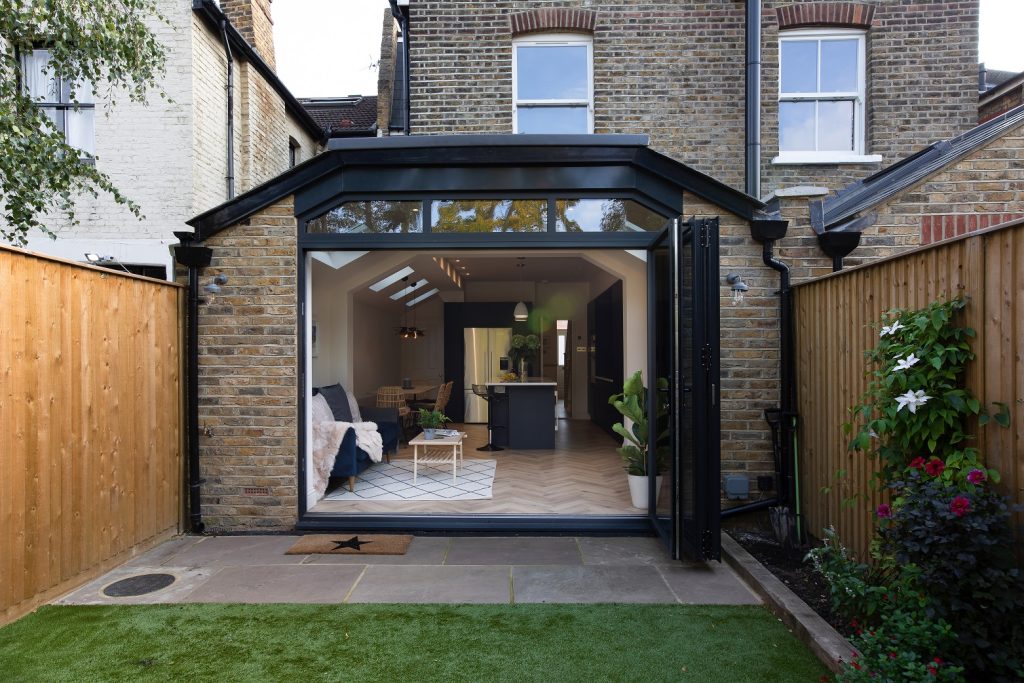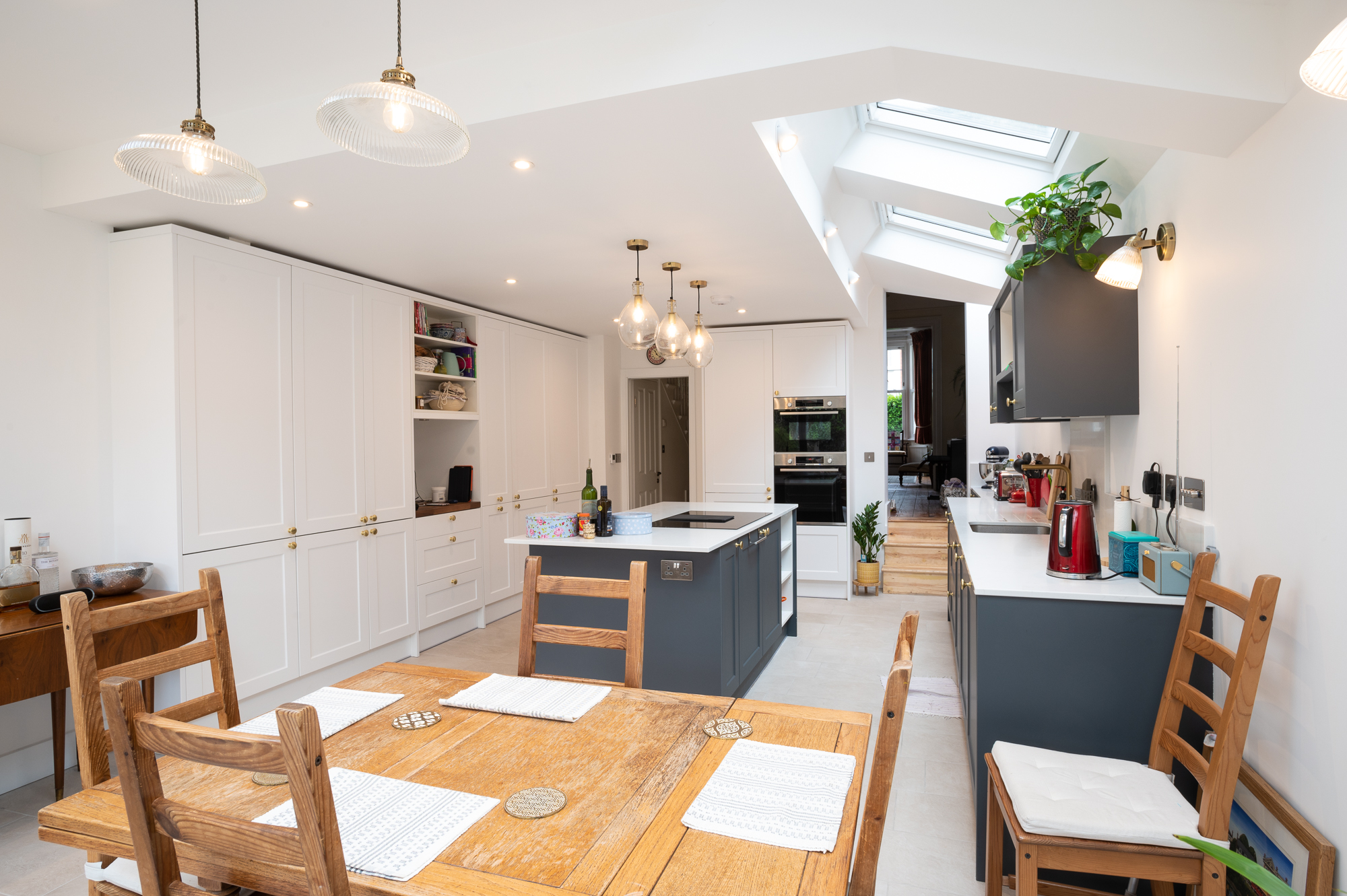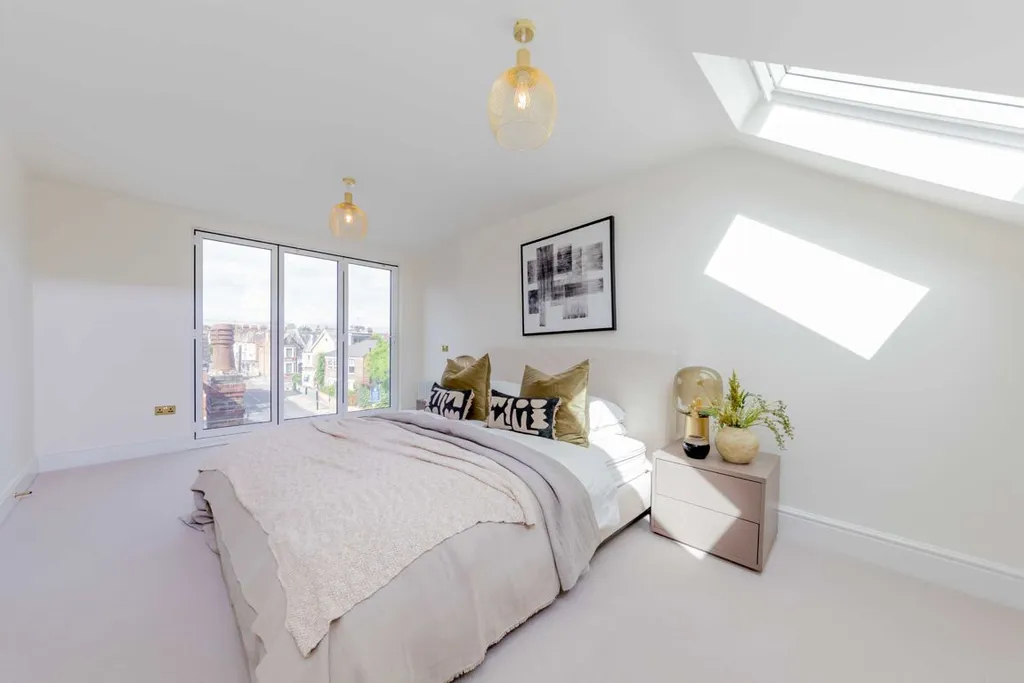There are so many different types of doors for different styles of properties. Can you tell the difference between a flush door and a panel food or between a French door and Dutch door? If you are redoing your place or simply thinking of changing the front door, you need to know about all door styles and also about a wide range of door materials that will suit your home the best.
Read about the different types of doors and the ideal material needed for them. We have also weighed the pros and cons of each type to help you make the right decision for your home.
Type of doors
1) Panel doors

Just as Casement windows are the most popular window styles, Panel doors are equally versatile and widely used design of doors throughout the UK for exterior and interior doors.
These doors fall under a traditional category but with the right colour and finish they can be turned into a beautiful contemporary style that can suit all properties.
A panel door has moulded panels in different designs and orders. A lot of front doors are designed with glazed panels to make a half or part-glazed door.
(Add designs of different panels)
Pros:
- It requires less maintenance.
- Panel glass doors add light, charm and beauty to any doorway in your house.
- They are weather proof as compared to other types of doors.
Cons:
- Panel doors are very costly, particularly when made from solid wood.
- Glass panel doors are easily broken, when there is a high blow of force. They often need curtains to be installed along with them, to achieve privacy.
- Panel doors have a solid core making them harder to handle and install.
2) Flush doors

A flush door is one of the simplest designs of doors that has a plain surface on both the sides. They are most commonly installed as interior doors but can also be used as exterior front doors.
These doors look best and are made with quality wooden veneer like Oak. They have a very modern touch and can look stunning in contemporary homes that want a sleek styling.
Pros:
- Flush doors give excellent appearance if proper plywood, veneer or laminate is used.
- It is cheaper as compared to panel doors, and requires less maintenance.
- These doors have a hollow core, sometimes made of a honeycomb material and are therefore easy to handle and install.
Cons:
- Plywood flush doors cannot be used outside as they do not react well to rain and sun.
- They are difficult to repair once the top veneer, laminate or plywood starts delamination due to temperature, moisture, etc.
3) Stable door (Dutch door)

Door that is horizontally split into two parts is a stable door or more commonly known as a dutch door or a double-hung door. This door can be fully opened or the top and bottom halves can be opened separately. This type of door has been used for centuries, mainly originating in the rural properties like huts and cottages. Before we had air conditioning these doors were a great way of ventilation. Opening the top door could keep the farmyard dirt and animals from entering the home to keep the children safe and add extra flow of fresh air to the home during warm days.
A stable door looks stunning for country style properties or holiday homes in farmyards. It is great to install as a kitchen door to give you a fresh connection with the outside.
As dutch doors have a very old style they are usually made with wood. You can choose from cherry, mahogany, alder, oak, walnut, or a multi-wood option.
Pros:
- The biggest advantage of a dutch door is that it keeps out any unwanted elements like dirt and farm animals while letting in light and fresh air. A dutch door offers a beautiful indoor- outdoor connection.
- It doesn’t only add a welcoming charm to the door but also gives it a beautiful rustic touch.
- A great way to install dutch door indoors is as a baby gate. Other stunning alternatives for the door can be to the laundry/ utility room or the office, where you want to let in light but still have a barrier for pets and children .
Cons:
- A dutch door might not be of a great use for houses in insect-ridden areas.
- Extra care is required as anyone could very easily get their fingers pinched between the two halves of the door.
4) French door

A French door is made out of two glazed doors that open outwards in the centre without a central mullion. This is a great way to enjoy the beautiful outdoors as when the door opens they offer an unobstructed view.
Technically, a single door of glazed panels is referred to as a French door and when a pair of French doors are brought together they are called French windows. However, over time they are widely referred to as French doors.
French doors were first designed in Renaissance France during the seventeenth century. The main objective behind the design was to let an excessive amount of light into a room. Mostly at first these doors were used for indoor rooms to make it more open and welcoming. However, they evolved into popular garden doors. Choose French doors over bi-folding doors when you want a more classic look and unobstructed view. They are extremely elegant and work best with any style of property.
The best materials for a French door can be uPVC, Composite, Aluminium or Timber. Timber is the most popular option as it looks the most elegant. There are two options you can choose from: softwood which can work for indoor installations or hardwood which is better suited for outdoors and can last for a longer period of time.
Pros:
- French doors create an illusion to make the home look bigger. Even though they are the most popular as garden doors, they work best in apartments as a barrier between rooms, still making the space look open and wide providing visibility into the next room. For eg, an open barrier between the living room and the dining room.
- These doors are extremely luxurious and aesthetically pleasing and will add a great value to your property along with providing an attractive appeal to it.
- French doors are very versatile and can be easily customised. Hence, they are your blank canvas to play with and create any style you want for your home: modern, country or victorian.
- These doors provide ample amounts of natural light to your home which in turn proves to be extremely energy efficient in warmer months. As during the day you would not need to turn on the lights and during warmer months it is a great way to let the fresh air in.
Cons:
- The most important thing to think about before installing French doors is the space they will need to open in full arc outwards. As these doors are larger as compared to most doors and not compact, they need stoppers to avoid getting struck by them or restricting the slamming in case of any high winds.
- The beauty and elegance of the French doors come with a price. They are slightly expensive compared to the usual solid wood doors, which might not be a problem but it is an important thing to keep in mind while budgeting your home’s refurb.
- These doors are difficult to install and are not a DIY job. It certainly can be done by someone who has fabulous DIY skills but most likely you will need a professional to complete the installation.
- French doors are not very energy efficient in colder months. Cold air can slip indoors from the central opening.
5) Patio door (Sliding door)

Traditionally the design of a sliding door is taken from a traditional Japanese door. Sliding patio doors started gaining popularity in the UK post war inspired by the Modernist design.
The difference in the designs of a traditional Japanese door and a sliding patio door is that a Japanese door features a paper covering whereas a sliding door is covered by glass to flood the room with natural light.
Patio doors as it sounds, are meant to be used outdoors especially at the rear of the house as an access to the garden. These make a great open connection between the inside and outside spaces.
They are extremely versatile and can suit any style of property, from Victorian to modern or from contemporary to country. They look absolutely fantastic and give the house a classic touch.
You can experiment with a number of materials that all go extremely well for Patio doors like Vinyl, Wood, Aluminium or Steel. Fibreglass doors are one of the trendiest patio door styles.
Pros:
- Sliding patio doors are a great way to let the natural light in. These doors can be coated to block out any UV rays. This coating does not affect the amount of natural light entering the home.
- Sliding doors are extremely efficient if they are to be installed indoors to divide a space especially if there is a limited room for a door to open, as these doors can slide open into hidden recesses. They will not cover any space when they are kept open and hence are rightly called as pocket doors
Cons:
- Many sliding doors have basic locks which can be unlocked easily. They are also transparent which compromises privacy.
- As sliding doors are made out of all glass, they need a lot of cleaning and attention as the smallest touch can leave fingerprints making the door dirty.
6) Bi-folding doors

A door that folds by the panels and slides along the track is called a bi-folding door. This door is best for properties that need very compact style doors as it fits against a wall and will not need a lot of space to open.
The design of folding doors has been around since Roman times, even though they have a modern look. In historical times, folding doors were made out of wood for stables and garages.
A bi-folding door can be made with timber or uPVC. However, Aluminium is the best option as it is the most durable.
If you want a classic touch, timber bi-folding doors might be a better option for your space.
Pros:
- Bi-fold doors are very easy to install. Whether you want to install a small door or replace a full wall, bi-folding doors are ideal. If you have kids, these doors are a great idea as different safety features like finger- safe and anti-bumpers can be installed.
- Glass bi-folding doors are a great option for both modern and traditional properties, especially if you want to open up your space. Adding it as a garden door can open up your kitchen and let you enjoy your garden as an extended living space. They work beautifully in flats by installing them between the living room and dining space, where you can open them up completely to enjoy a larger space with your family and friends.
- Bi-folding doors have minimal locking points making them an extremely secure choice as patio doors, especially if they are built with aluminium.
Cons:
- Bi-folding doors have a lot of frames. Which will obstruct the view compared to sliding doors.
- Traditionally bi-folding doors do not have a threshold. They can be installed at a slightly higher level. However, extra care needs to be taken in terms of rain or water on the outside surface as there is a smaller barrier between the indoor and outdoor ground.
- Even though these doors are compact and can be folded to the side, they still need some space inside the room to be folded away. As compared to pocket doors, bi-folding doors need more space after they are opened.
7) Roller door

Roller doors are extremely trendy and fun. As the name suggests, they roll up like a traditional shutter made out of steel. They are popularly used as the doors of garages and storage units. The most popular material for a roller door is steel because of its design flexibility, durability and the fact that steel can survive any weather condition. There are endless design options for steel roller doors as it is a cheaper and practical option compared to solid wood or uPVC doors.
Pros:
- Roller door are extremely low maintenance and will last for a very long time
- There are various design options available to choose from
- The cost of a roller door is cheaper as compared to other door options
Cons:
- Dents can easily be formed in a steel roller door
- Other weather can affect the inside temperature as these doors are not meant to be natural insulators
- If the door sustains any scratches they can catch rust. Hence any mishaps need fixing immediately to maintain the longevity of the door
8) Saloon door

Saloon doors, also known as swinging doors, have been around since a very long time. Traditionally these double hinged doors were used for bars and pubs making it easier for people to enter and exit without the confusion of push or pull. They used to drive people in from the streets as they heard loud music while passing by. The second important function of saloon doors was to bring fresh air in and let the smoke out.
As of now, these doors are a great option for the laundry room in your home or between the kitchen and dining space, as you would not have to use your hands to open the door while carrying food and dishes.
These doors are typically made out of wood which is the best option of all. Wood maintains the old charm and adds a feeling of time to the space. They can be painted in different colours to suit your home’s interior.
Pros:
- Swinging doors are extremely functional and easy to use if added to the right space. The doors look stunning and are very helpful if added as a kitchen, pantry or laundry door. They make your life much easier when your hands are occupied and you need the door to open.
- Swinging doors can be designed in number of ways and give a very modern yet rustic touch to the space
- A swinging double door is a great space-saving solution. They will have a smaller in-swing and out-swing as compared to traditional single hinged swinging doors.
Cons:
- The swinging can be a problem as once the doors are pushed open they will continue swinging back and forth. However, gravity hinges are recommended if you prefer gentle swings. They will allow the door to operate the swings quietly.
- There will be small gaps in between the doors. It is required for the two doors to function in proper swinging motion without hitting each other.




